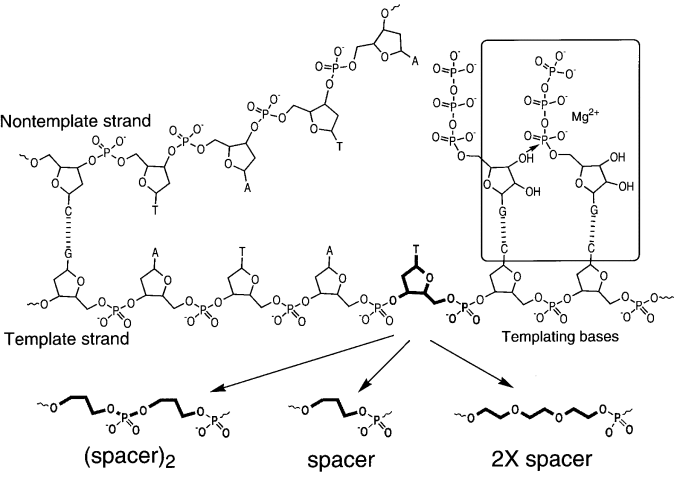Positioning of the Start Site in the Initiation of Transcription by T7 RNA Polymerase
Benjamin F. Weston, Iaroslav Kuzmine, & Craig T. Martin, J. Mol. Biol 272, 21-30, 1997

The determination of various polymerase structures has sparked interest in understanding how the polynucleotide template interacts with the active site. In the primer-independent initiation of transcription, an additional question arises as to how the complex directs the first two bases of the template uniquely into the active site. Recent studies in the model RNA polymerase from bacteriophage T7 demonstrate that upstream duplex contacts provide at least some of the binding specificity and suggest that the enzyme interacts with the template strand in a melted context near the start site for transcription. The current work probes the role of the template strand in positioning of the first two templating bases during initiation. The results suggest that such positioning is not rate limiting in steady state turnover, and that the insertion of a very large and flexible linker three or four bases upstream of the start site has no significant effect on the fidelity of start site selection. The insertion of linkers immediately adjacent to the start site, however, does significantly decrease the fidelity of start site selection (as evidenced by a large increase in misinitiation at position +2, with little change in the observed rate of correct initiation), suggesting that some of the nontranscribed template DNA does help to position the first two templating bases into the active site of the RNA polymerase. Finally, incorporation of an abasic site at position -1 yields a similar decrease in initiation fidelity, suggesting a role for stacking of the bases at positions -1 and +1.
PMID: 9299334 DOI: 10.1006/jmbi.1997.1199